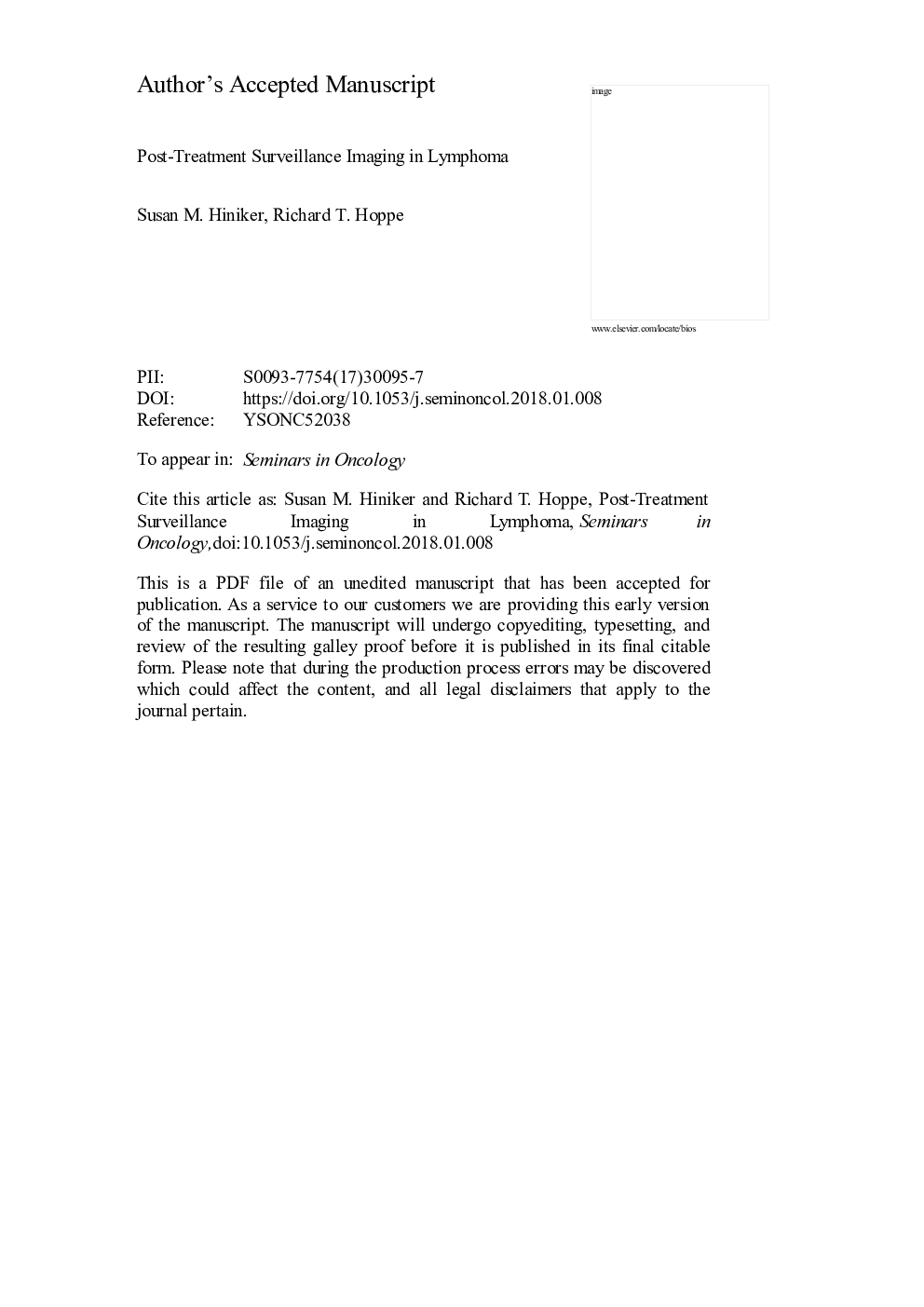| Article ID | Journal | Published Year | Pages | File Type |
|---|---|---|---|---|
| 8459714 | Seminars in Oncology | 2017 | 38 Pages |
Abstract
Appropriate post-treatment management of patients with lymphoma has been controversial, with imaging frequently performed as post-treatment surveillance. The goal of post-treatment imaging is to identify relapse prior to clinical symptoms, when the burden of disease is lower and the possibility of effective salvage therapy and cure are greater. However, little data exist to support the performance of surveillance imaging after completion of treatment, with the vast majority of studies suggesting there is no clinical benefit to surveillance imaging in asymptomatic patients. Ongoing efforts seek to identify a subset of patients with a higher risk of relapse that might benefit from surveillance imaging, though financial and other costs associated with imaging are non-negligible and must be considered. Here we summarize the current data regarding post-treatment surveillance imaging in lymphoma.
Related Topics
Life Sciences
Biochemistry, Genetics and Molecular Biology
Cancer Research
Authors
Susan M. Hiniker, Richard T. Hoppe,
